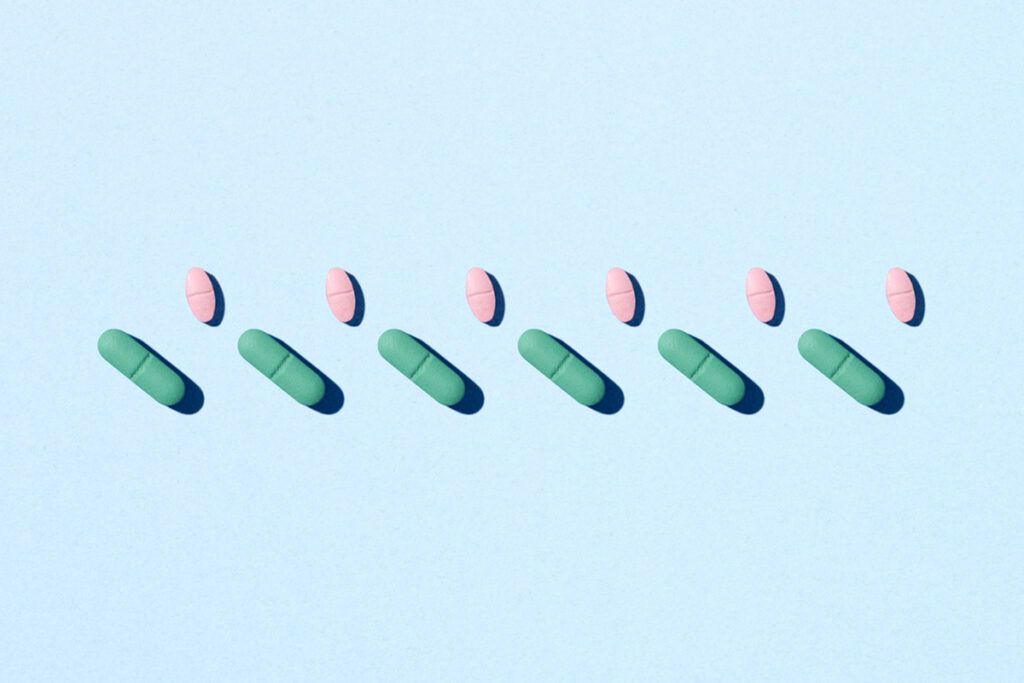When a doctor prescribes you medication, it’s important to understand certain terms that you might hear, such as “new prescription,” “repeat prescription,” and “refills.”
Understanding what these phrases mean and how they differ can help you save time, better understand your treatment, and manage your condition.
Prescription types

Below, we look at the different types of prescriptions to help you better understand your treatment plan.
New prescriptions
A new prescription is any medication you’re taking or getting from a pharmacy for the first time. All prescriptions start as new ones the first time a doctor prescribes them to you. Some may be for one-time use only, whereas others may turn into repeat prescriptions.
For example, a doctor or healthcare professional may prescribe antibiotics for a chest infection as a new prescription, and you may only need to take them for 5 days. The prescription may not need to be repeated because the chest infection may resolve by the time you have completed the antibiotic course.
With a new prescription, a healthcare team (usually a doctor, pharmacist, or both) will let you know:
- how long you must take the medication
- how often you should take the medication (daily, weekly, etc.)
- the dosage of the medication
- any special instructions, like the best time of day to take the medication or whether you need to take it with food
They’ll also let you know what types of precautions you need to take during treatment with the medication, such as avoiding alcohol and being aware of any other possible drug interactions.
Repeat prescriptions
Repeat prescriptions, also known as refills, refer to prescription medications that you get on a regular basis without having to visit a healthcare professional to get another script.
When prescribing a medication, your healthcare team will determine whether you’ll need it on a regular basis. If so, they’ll label it as a repeat prescription. Your healthcare team may also include advice to the pharmacy on the number of prescription refills allowed.
Repeat prescriptions can include medications that help you manage a long lasting (chronic) condition. These are sometimes referred to as maintenance medications and could include blood pressure or diabetes medications.
If your repeat prescriptions have a specific duration (the time frame in which you can take them), you may have to visit a doctor again so they can:
- reevaluate your health
- check on how the medication is working
- determine whether the dosage needs altering
They can then decide whether renewal is appropriate.
According to a 2017 study, repeat prescriptions make up a large portion of prescription medications: 77.6% compared with 22.1% for new prescriptions.
Renewal
Prescription renewal is when a medication you’ve been taking for some time reaches its duration or number of refills, and you must get a new prescription to continue taking it.
Healthcare professionals often schedule a checkup after a certain period, depending on your condition, to see how well your condition has responded to the medication and to address any questions you may have.
If everything is going well and if it is safe to do so, your doctor may issue a prescription renewal.
Are there any benefits from getting repeat prescriptions?
Repeat prescriptions can save you time because you don’t need to get a prescription from your doctor every time your medication runs out. It can also save you money because medication costs can be lower when you buy in certain quantities on a regular basis.
Repeat prescriptions can also save time for healthcare professionals and their staff, according to an older 2011 study.
However, there are some precautions when it comes to refills and repeat prescriptions:
- There’s a higher chance of nonadherence among people who have repeat prescriptions. Nonadherence refers to not taking medication as a healthcare professional prescribes or stopping the medication entirely.
- The repeat prescriptions process may link with lower quality care and risks for more adverse effects.
- It’s important that, after you’ve exhausted the number of refills and prescription repeats ordered by your healthcare professional, you schedule an appointment with them. They need to check how well the medication has worked and whether you’re experiencing any adverse effects.
How to get the best price on prescription medication
Having a repeat prescription means that you will take medication on a regular basis, making it impossible to avoid regular costs.
Some pharmacies offer discounts if you fill a 90-day supply, and you can talk with a healthcare professional, pharmacist, and, if applicable, an insurance company about other ways to manage costs prescription costs.
If you have an insurance plan, check their formulary or drug list. This will tell you which medications the plan covers. It will also give you an idea of the costs.
Formularies have different tiers, or levels. More common, lower cost medications are often in the lower tiers. The formulary should also show your copayment and deductible for specific medications.
If your insurance doesn’t cover a medication or you don’t have an insurance plan, you can talk with a doctor and pharmacist. They’ll be able to guide you and help you find different assistance programs that can help you cover some of the medication costs.
If you need help covering the cost of medications, the free Optum Perks Discount Card could help you save up to 80% on prescription drugs. Follow the links on drug names for savings on that medication, or search for a specific drug here.
